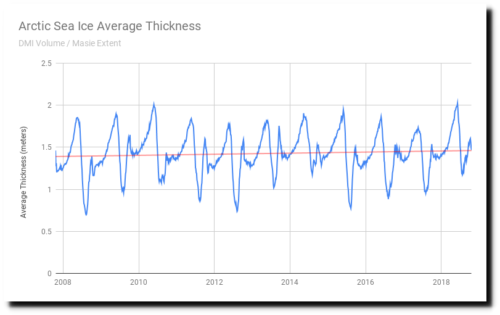 Journalists have been herniating themselves unnecessarily in covering a new report from the Intergovernmental Panel on Climate Change finding that global temperature might increase by another 0.9 degrees Fahrenheit sometime between 2030 and 2052.
Journalists have been herniating themselves unnecessarily in covering a new report from the Intergovernmental Panel on Climate Change finding that global temperature might increase by another 0.9 degrees Fahrenheit sometime between 2030 and 2052.
The truth is, any reporter with a fifth-grade education could have made the same calculation last week, last year or 10 years ago by applying the standard climate-sensitivity estimate (in use since 1979) to the standard emissions forecasts.
The IPCC foresees heat waves, rainstorms, and floods, but heat waves, rainstorms, and floods have always happened, and it isn’t clear what the report is really saying.
The New York Times notes an estimate that an additional 0.9 degrees will cost the global economy $54 trillion but fails to say over what period.
For the record, the global gross domestic product is expected to hit $100 trillion in 2020, and virtually all experts see global GDP continuing to grow faster than global climate costs mount up.
The climate cognoscenti, meanwhile, are understandably more focused on what an important report, due in 2022, will say about the 40-year-old, unsatisfying climate-sensitivity model that underlies so many fuzzy forecasts reported in the media as fact.
Today’s IPCC is mum but does specifically acknowledge two studies this year that greatly play down the likelihood of catastrophic climate outcomes, including one described in this column in February.
Bottom line: The U.S. media once again proves itself largely useless to anyone interested in the climate conundrum.
“Planet has only until 2030 to stem catastrophic climate change, experts warn,” went a CNN headline, announcing yet another deadline that is sure to be missed.
Unmentioned is the “or else”: We’ll have to adapt to some measure of climate change in a climate that is always changing even as the economy evolves toward greener technologies.
Or take a recent Washington Post piece that hyped a Trump administration estimate that the earth might warm by 7 degrees Fahrenheit by the end of the century, which was found buried in an environmental statement related to fuel-economy mandates.
Again, this merely applies the standard climate-sensitivity envelope to previously forecast future emissions, as any reporter could have done.
The Trump document, in fact, is no different from Obama documents showing that the pending Obama fuel-mileage rules produce virtually no climate benefit—less than 0.0072 degrees Fahrenheit by 2100.
The Trump analysis also states plainly what the IPCC only muffles: “Drastic reductions” in greenhouse gases are not “currently technologically feasible or economically practicable.”
Who among U.S. politicians might be considered the anti-Trump? Here is California Gov. Jerry Brown making exactly the same point, more colorfully, to the Nation magazine’s Mark Hertsgaard: “Brown lurched forward, nearly leaping from his couch to denounce what he clearly viewed as the activists’ naive demagoguery. ‘What if I could snap my fingers and eliminate all gasoline in all California gasoline stations?’ he demanded. ‘What would happen? Revolution? Killings? Shootings? … There would be mass chaos. You’d never get close to [leaving oil in the ground] before the public reaction stopped it.’ ”
Read more at Wall Street Journal

















Capitalism continues to create wealth and raise our standard of living, despite the Socialists’ best efforts to sabotage it.
Adulterated climate data can’t stop it, either. Those who have chosen to exploit green energy are for the most part, are capitalists.
Global Warming isn’t happening, wouldn’t matter if it was. Get with it, ignore the noise!